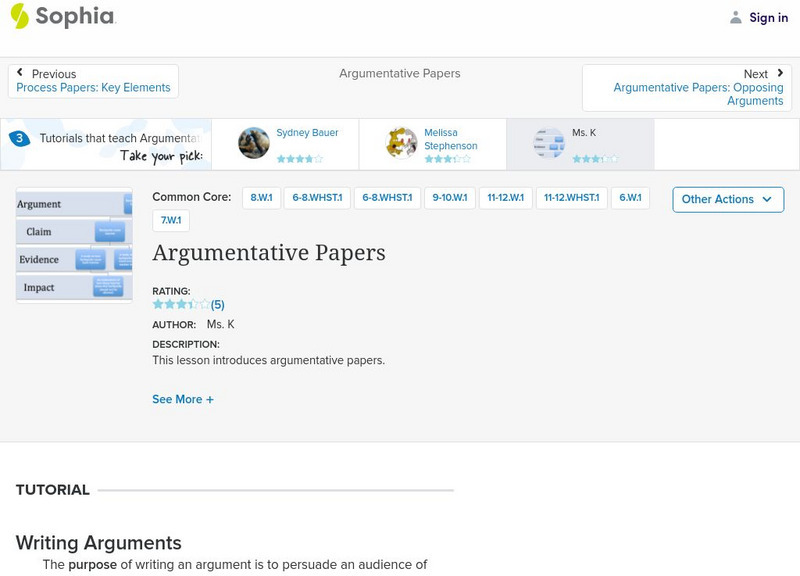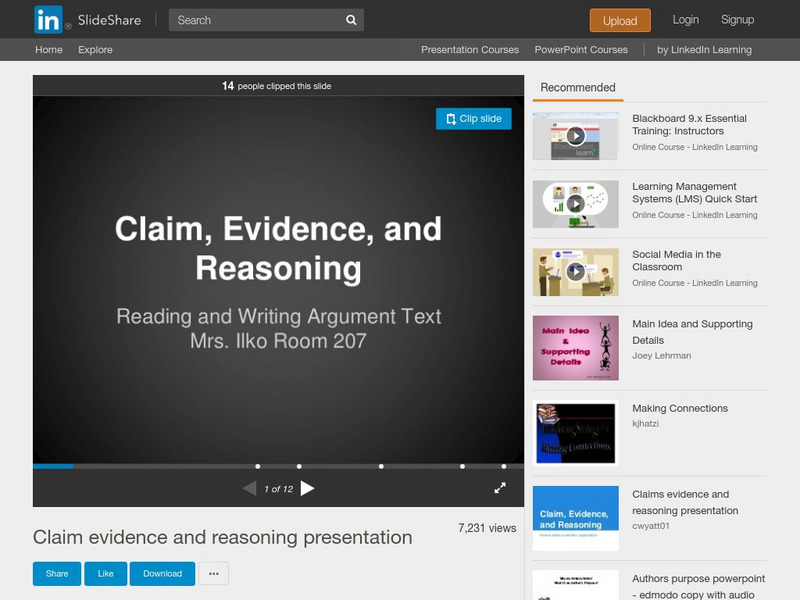Grammarly
Grammarly Handbook: Basic Mechanics
This page focuses on the basic mechanics of writing including links to Genre, Thinking, Methods of Reasoning, Evidence, and Citation.
Grammarly
Grammarly Handbook: Evidence and Proof
This page focuses on evidence and proof to support your main ideas in papers. The evidence must come from primary sources like lab results or secondary sources like quotes from experts that support your thesis.
ReadWriteThink
Read Write Think: K W L S Chart
A printable K-W-L-S sheet to help students activate prior knowledge, ask questions, record new learning, and then ask additional questions to extend inquiry beyond the text . Directions on how to use this type of graphic organize as well...
ReadWriteThink
Read Write Think: Questioning a Comprehension Strategy for Small Group Reading
Contains plans for three lessons about asking the right questions while reading. After the teacher explains the difference between factual and inferential questions, middle schoolers practice using them in small-group guided reading. In...
Grammarly
Grammarly Handbook: Evidence
This page focuses on the evidence to support points in an essay. Be sure you have enough support for each point and that the points are strong ones. It also suggests you double check both direct and indirect quotations in your paper to...
University of Victoria (Canada)
The U Vic Writer's Guide: Figures of Thought: Conceit
A definition of the term "conceit" as it applies to figures of speech. It further breaks it down into definitions of Petrarchan conceit and metaphysical conceit.
Polk Brothers Foundation Center for Urban Education at DePaul University
Depaul University: Center for Urban Education: Classify Facts and Opinions [Pdf]
Students will find three lessons about facts and opinions in this learning module. The following topics are linked in the module: contrast and evaluate fact and opinion; classify facts and opinions; and locate and classify facts.
Austin Independent School District
Austin Independent School District: Logical Fallacies [Pdf]
A slide show explaining different types of fallacies in persuasive texts including personal attack, bandwagon, appeal to authority, and many more. Then try to find the fallacy in several examples; answers and explanations provided.
Quia
Quia: Fact or Opinion?
This is a 30 question quiz on separating fact from opinion. Students read the statement and select fact or opinion. Java plugin is required.
ReadWriteThink
Read Write Think: Guided Comprehension: Self Questioning
Online lesson introduces students to the concept of self-questioning, assisting them in an understanding of question-answer relationships that should improve their reading comprehension skills. In-depth study will lead to improved...
Polk Brothers Foundation Center for Urban Education at DePaul University
Depaul University: Center for Urban Education: Evaluate Support for a Claim[pdf]
This resource provides a downloadable worksheet to use after reading a nonfiction text. Students will evaluate an author's support for a claim by answering the questions and prompts provided on the worksheet.
E Reading Worksheets
E Reading Worksheets: Fact and Opinion Lessons
In this learning module, students will learn more about the differences between facts and opinions. A PowerPoint presentation and related activity are provided to reinforce the topic of facts vs. opinions. This module is designed to...
E Reading Worksheets
E Reading Worksheets: Fact and Opinion Worksheets
Fact and opinion practice exercises, answer sheets, and explanation summaries are included on this tutorial site. Worksheets are tiered in levels of difficulty.
Sophia Learning
Sophia: Argumentative Papers: Lesson 1
This lesson introduces argumentative papers. It is 1 of 3 in the series titled "Argumentative Papers."
Other
Flickr: Critical Thinking Skills Poster
A downloadable critical thinking skills poster based on the original six levels of Bloom's taxonomy.
Other
Six Minutes: Speech Analysis #1: How to Study and Critique a Speech
Dlugen presents a detailed collection of tips to observe when critiquing others' speeches. This skill is critical in improving individual presentation abilities. SL.9-10.3 Eval Presentation. CCSS.ELA-Literacy.CCRA.SL.3, SL.9-10.3 Eval...
Tom Richey
Slide Share: Claim Evidence and Reasoning
A slideshow with twelve slides about reading or writing an argument, analyzing the claim and looking at how it is supported with observation, evidence, and reasoning.
Biz Move
Biz Move: How to Be a Better Listener
Article on the importance of listening in the business setting. Explains what listening is, gives guidelines, and lists barriers.
Biz Move
Biz Move: Master Your Non Verbal Communication Skills
This article dicusses many aspects of nonverbal communication - eye contact, facial expressions, distance, paralanguage, and more. This is a very good introduction to the subject.
Grammarly
Grammarly Blog: Qualifiers and Quantifiers
An explanation and examples of how qualifiers and quantifiers are used in sentences. Links to additional information are provided.
Grammarly
Grammarly Blog: Negatives
An explanation and examples of negative words and how they affect a sentence.
E Reading Worksheets
E Reading Worksheets: Fact and Opinion: Reading Test 3
A 25-question quiz where students must identify statements as fact or opinion. Results can be printed, saved, or emailed.
Sophia Learning
Sophia: Judging and Reacting: Tutorial
In this slideshow tutorial, students will review the critical reading techniques of making judgments and forming reactions about what they read. Explanations are given about drawing conclusions, responding to literature, and making...
Sophia Learning
Sophia: Supporting Details: Facts and Statistics
This lesson discusses how statistics can be used as supporting details. This tutorial shares a short audio lesson [05:16] and supplemental notes with the lesson's content.







![Depaul University: Center for Urban Education: Classify Facts and Opinions [Pdf] Unit Plan Depaul University: Center for Urban Education: Classify Facts and Opinions [Pdf] Unit Plan](https://content.lessonplanet.com/knovation/original/119988-719af6c927af61affa025c27754c7fae.jpg?1661787067)











